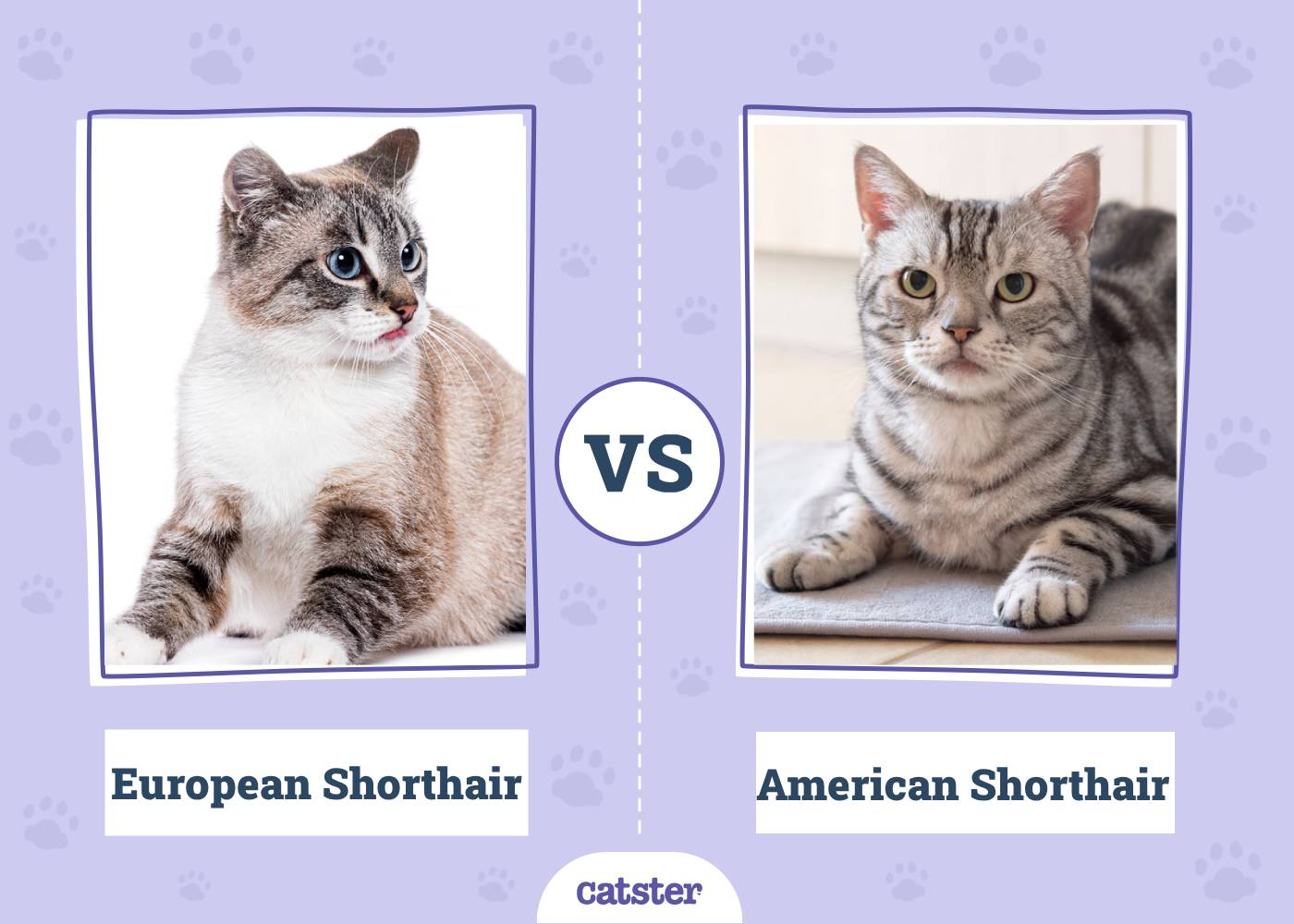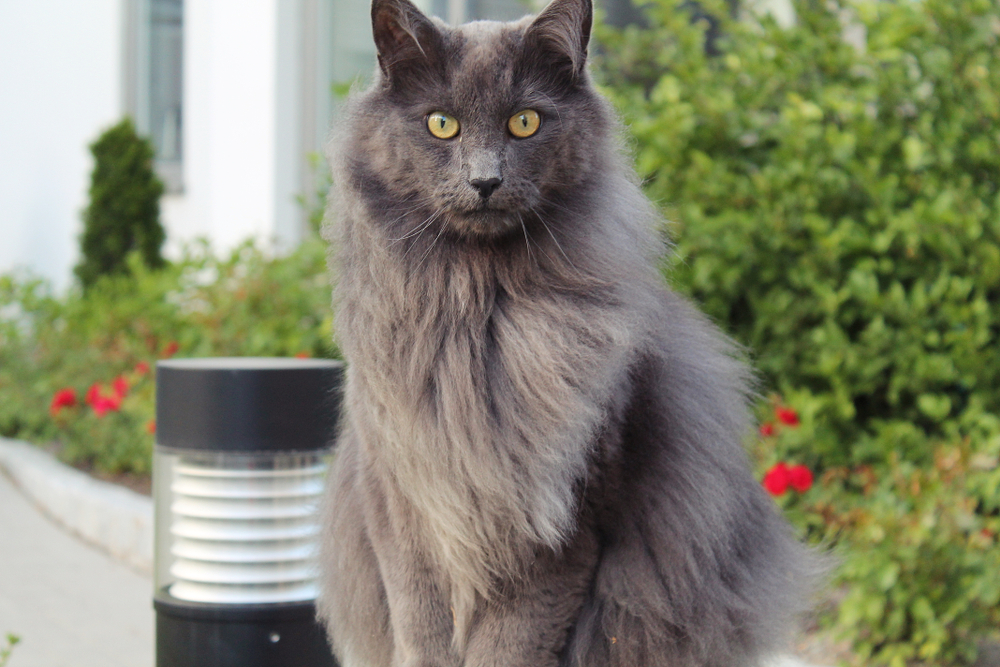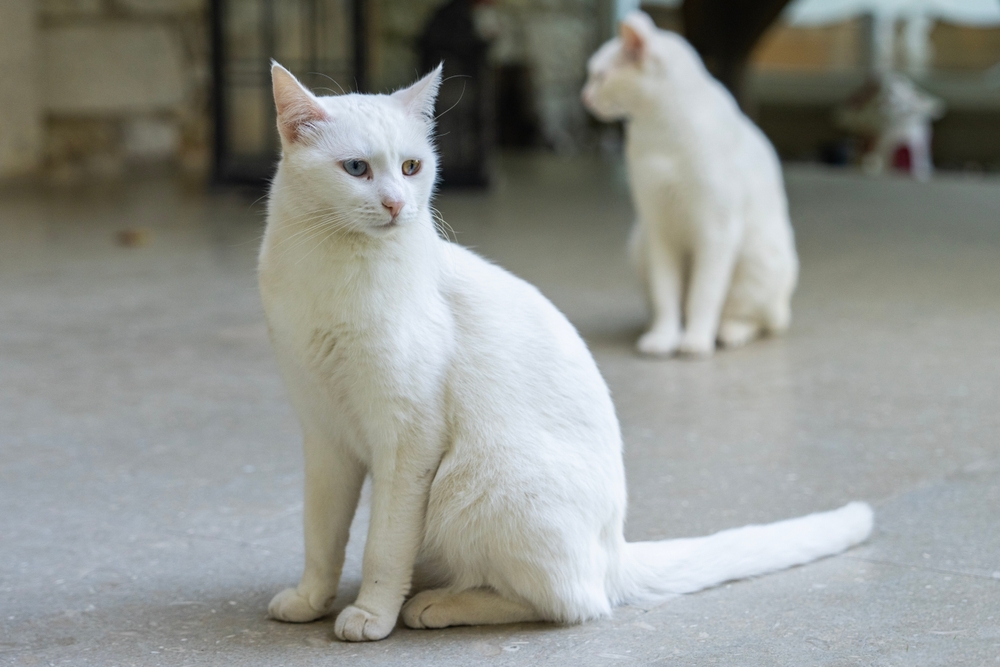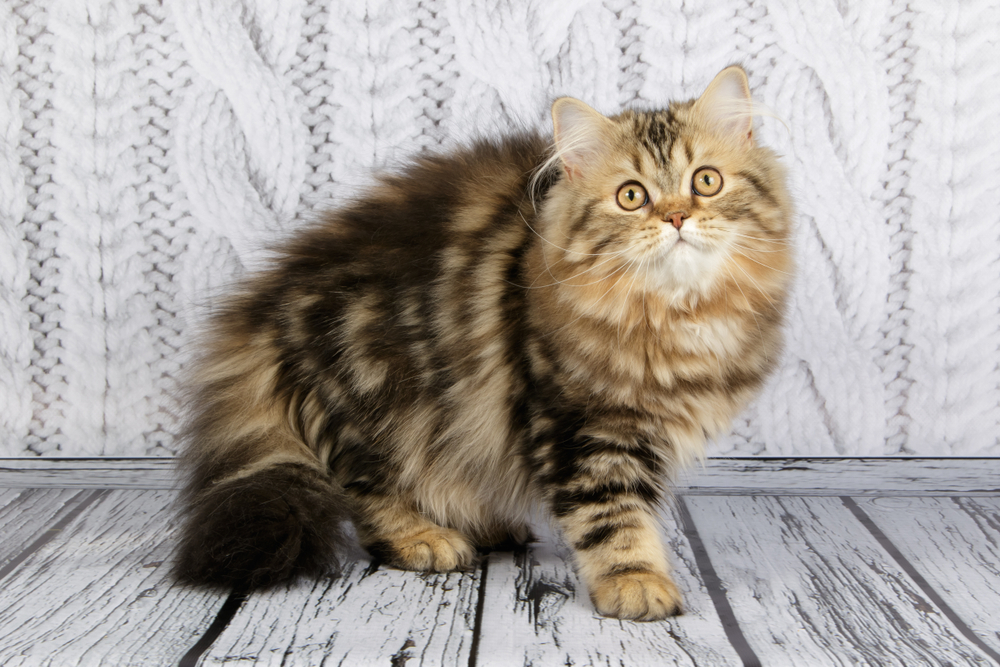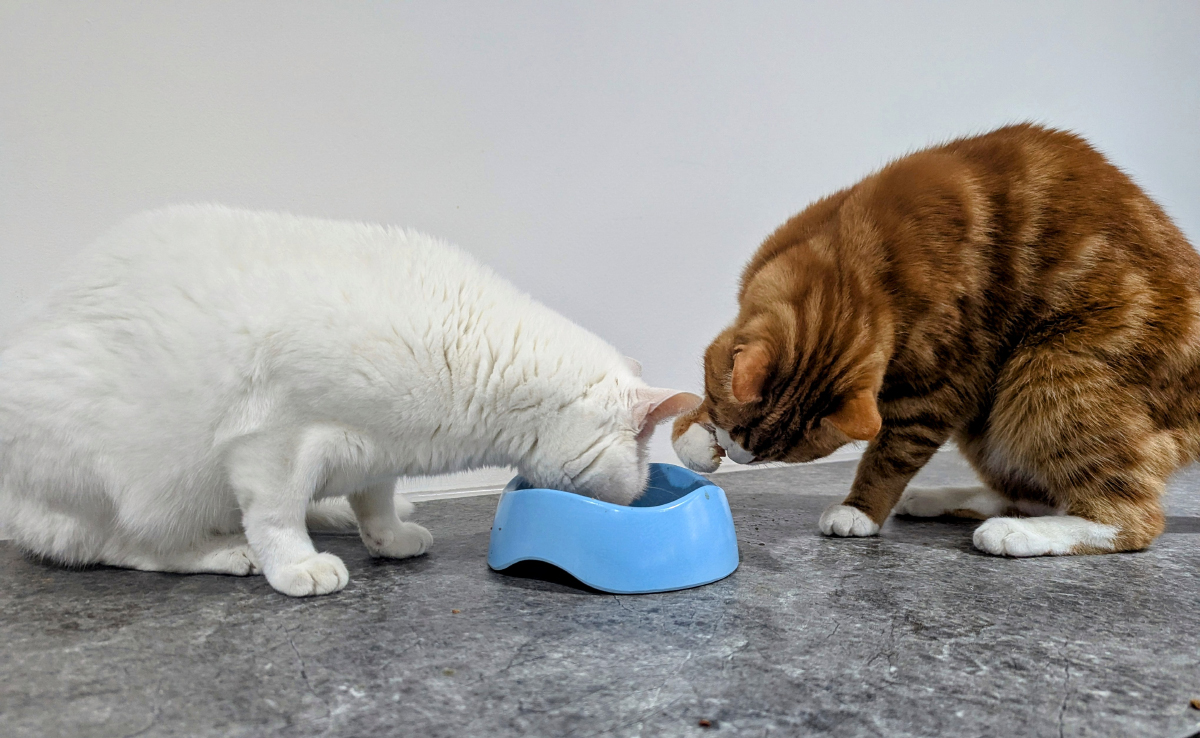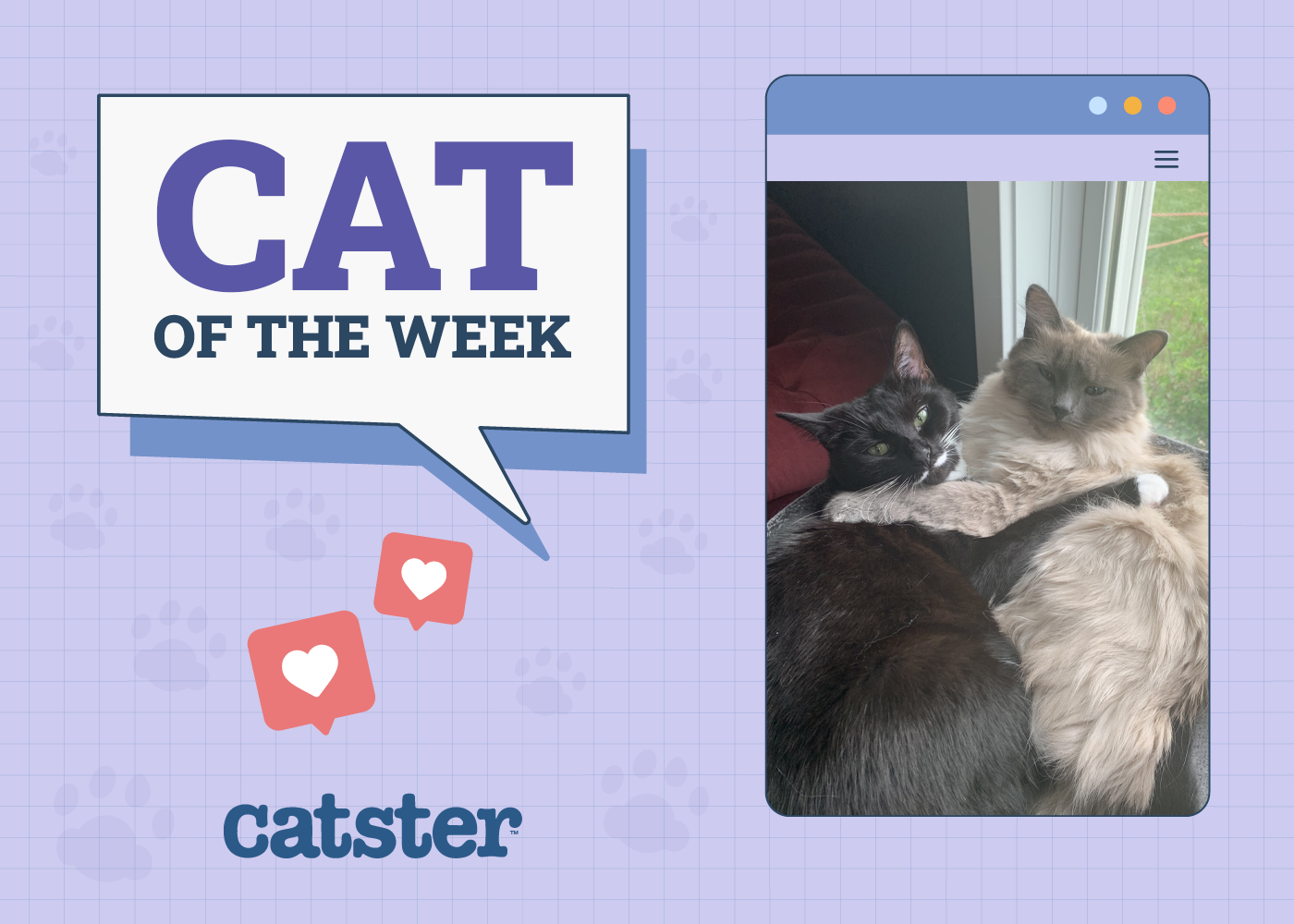Click to Skip Ahead
Cats and dogs can be bred to have purebred lineages that focus on pulling out certain traits to standardize the breed.
Shorthair cats are related to many of the domesticated breeds that we have today. They do not come from old stock but have been bred purposefully nonetheless. Many people believe that there are only two purebred shorthair cat breeds, but actually, there are three. These include the American Shorthair, the British Shorthair, and the European Shorthair.
The American and British Shorthairs are the better known of the trio. They have been around for longer, and the European Shorthair has more recently been developed.

Visual Differences
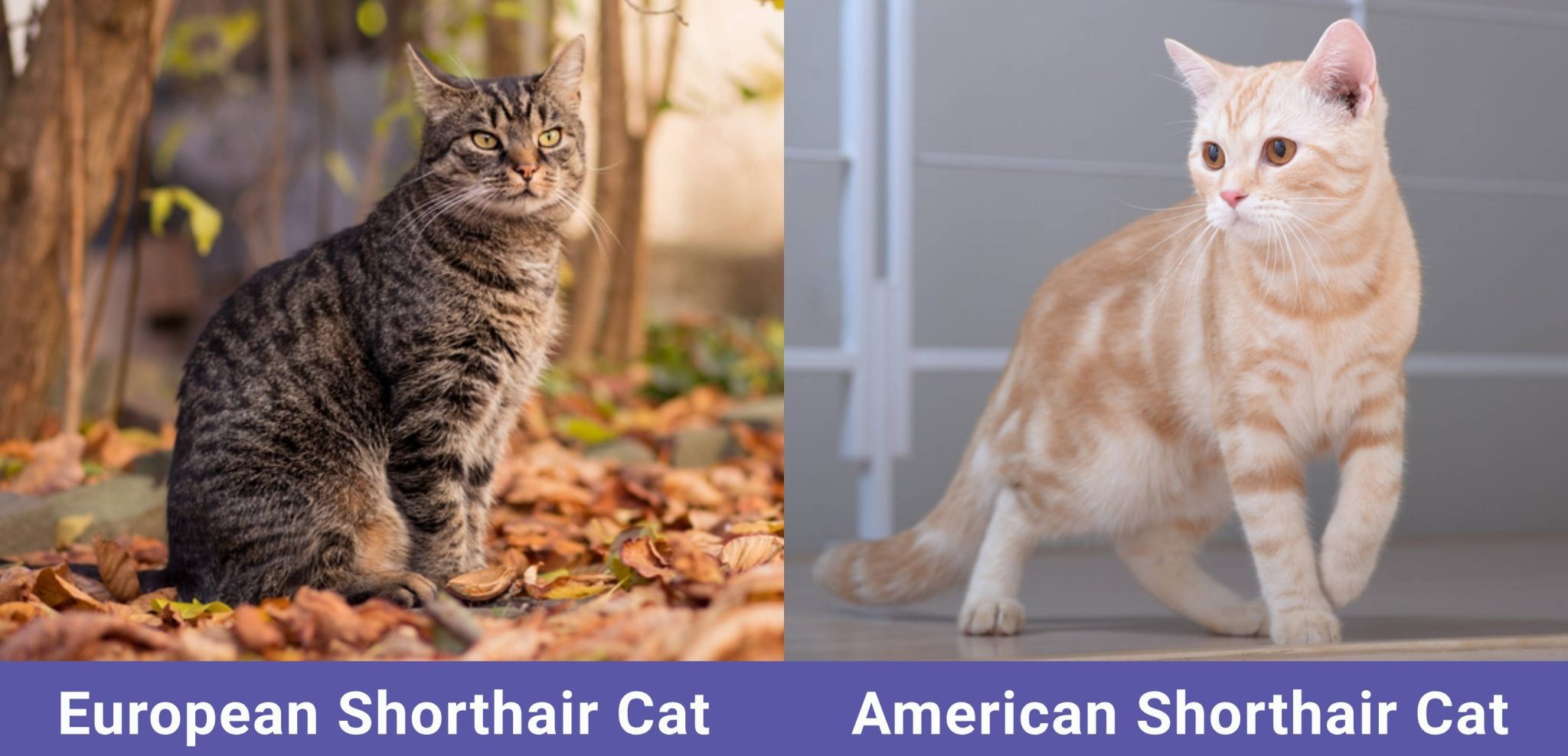
At a Glance
- Average height (adult): 9–11 inches
- Average weight (adult): 10–15 pounds
- Lifespan: 15–20 years
- Exercise: 20–30 minutes per day
- Grooming needs: Moderate
- Family-friendly: Yes
- Other pet-friendly: Often
- Trainability: Poor
- Average height (adult): 8–10 inches
- Average weight (adult): 8–12 pounds
- Lifespan: 15–20 years
- Exercise: 20–30 minutes per day
- Grooming needs: Moderate
- Family-friendly: Yes
- Other pet-friendly: Often
- Trainability: Poor

European Shorthair Overview
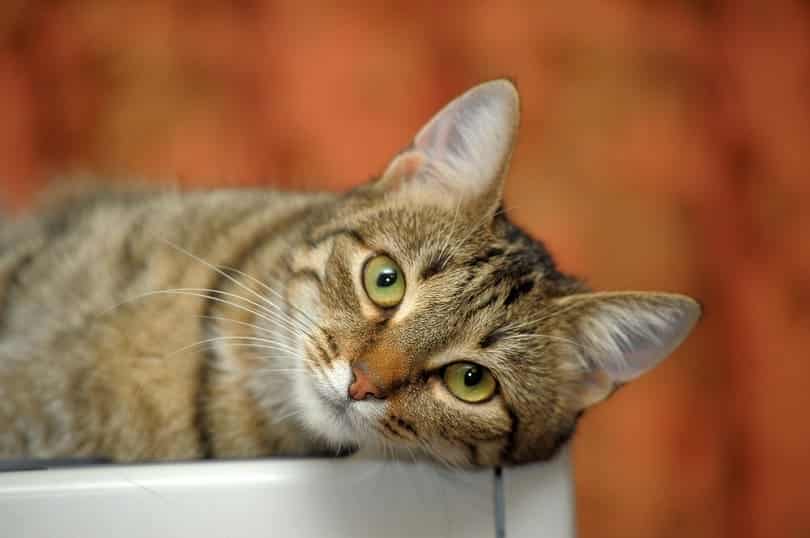
Personality / Character
The European Shorthair is a beloved cat for their ability to adapt to new environments quickly and be relatively content no matter where they find themselves.
They are a good cat to have around if you have visitors frequently coming in and out or you already have other animals in the home. They do have a high prey drive, so keep creatures like hamsters out of their reach.
These kitties are loving and lovable. They adore their pet parents and will work harder than your average kitty to make them happy. They need plenty of attention and cuddling during the day. These cats love to play around, so having plenty of cat toys around will help them get their daily exercise.
They are intelligent as well. This combination means that it will help both them and you to exercise them mentally, giving them food puzzles to hone their instincts and keep them occupied.
History
The primary difference between the Shorthairs of the world is the region they come from and the length of their maintained breeding. Geographically, the British and American Shorthair has had a further distance to develop separately from each other. The European Shorthair has become a different breed over time but is still difficult to characterize using physical traits alone.
The British Shorthair was the first one to be bred as distinct from the other domesticated shorthairs. The breed was first recognized in the 1870s, and they have a blockier body type because of the Persian influence in their general genetic pool. The American Shorthair was next.
The European Shorthair has only been recognized by the European cat association, called FIFe, at this point. FIFe is based in Luxemburg, where the shorthaired cat has predominantly been established and was recognized in 1992.
They do not have a well-developed breeding standard yet. Their description has them looking similar to any other kind of domesticated cat.
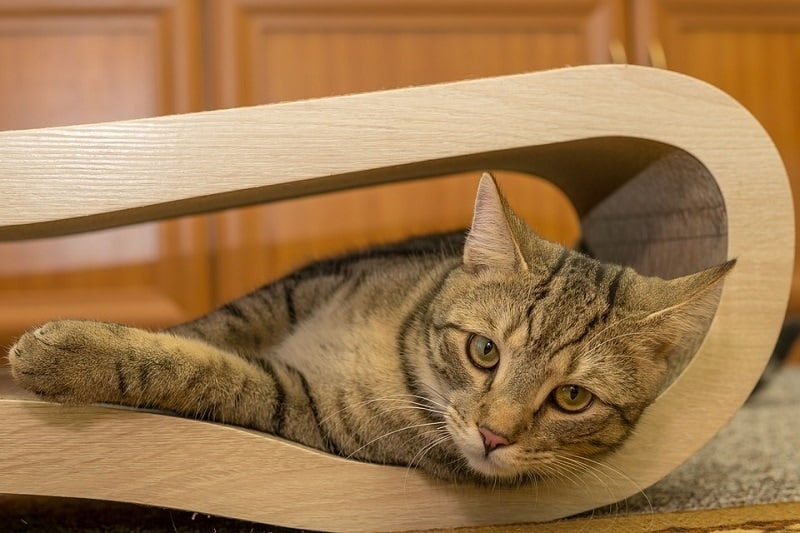
Health & Care
The European Shorthair knows how to take care of themselves fairly well. They are excellent self-groomers but will need a bit of help from you taking care of certain other grooming aspects. These include trimming their claws, since they are no longer outdoor predators. They also need you to brush their teeth weekly to keep them from developing dental issues later in life.
All Shorthair cats have a more robust body type. They need to be encouraged to be athletic by having daily playtime, so they don’t gain unnecessary weight. Choose cat food that is high in protein and low in fats or extra additives.
Suitability
The European Shorthair cat is best for families with enough time to give them love and play with them each day. They do just as well in families with singles or seniors as they do in ones with small children. If you do have young children, teach them how to properly handle the cat so neither ends up getting hurt.

American Shorthair Overview
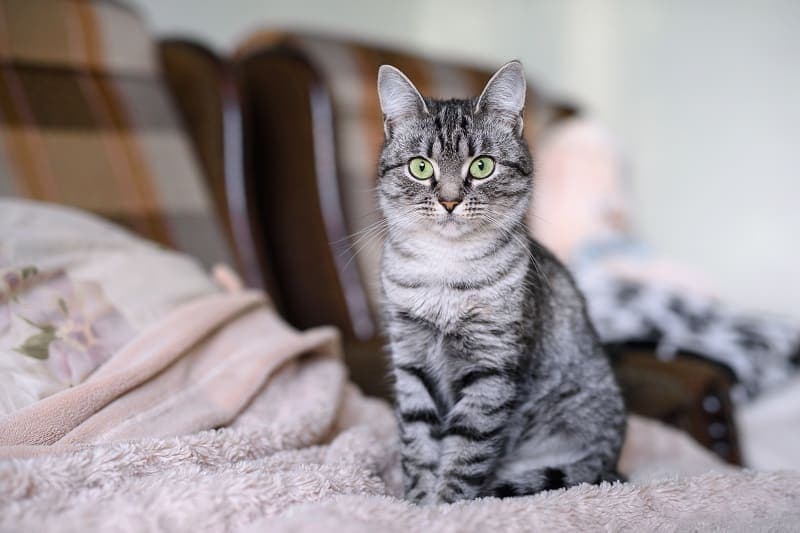
Personality / Character
The American Shorthair cat is excellent if you need a companion. On the whole, these old mousers are known for being easy-going and adaptable, similar to their European counterparts. They are exceptionally loving and will value time spent curled up on your lap or beside you whenever you have the time.
These cats are not high maintenance. While they do love to play and need daily playtime, they are also talented at keeping themselves occupied. They develop quite a strong loyalty to all their family members and will be happy to see you when you arrive back home. They generally do quite well in homes with other animals that are their size or larger.
History
The American Shorthair is one of the few cat breeds considered native to the United States. But historically speaking, the breed originated from Europe. They were initially brought over as mousers on ships like the Mayflower. The pilgrims used them to keep stores of food safe and free from vermin.
In 1904, the first breeding of the American Shorthair cats was recorded. The British Shorthair was one of their parents, and their name changed to the American Shorthair in the 1970s. They were originally known as the Domestic Shorthair.
Health & Care
Similar to the European Shorthair, the American Shorthair is an easily managed cat. They are talented self-groomers that, by and large, keep themselves. They do need their nails clipped at least once a month, and they benefit from having their teeth brushed a couple of times a week as well.
Brushing the American Shorthair is a bit more critical than with the European. They groom well, but they have thicker coats and will lose more hair seasonally. These cats have slightly longer hair than the European Shorthair and can get knots in it if not maintained.
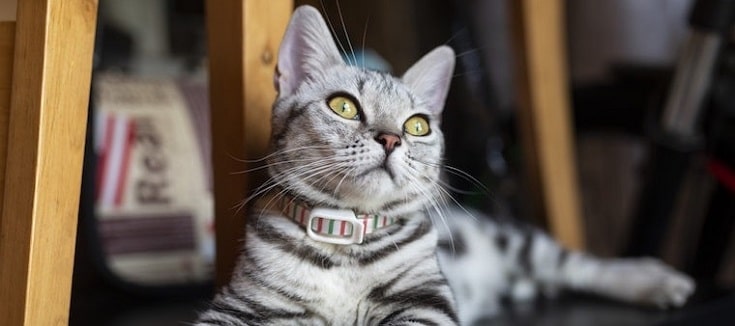
Suitability
The American Shorthair cat is a suitable companion animal for almost anyone. They enjoy being around loving families but do well with singles and seniors. As long as you can make enough time to play with them and give them loving attention, they will be happy.

Which Breed Is Right for You?
There is almost no difference between the two in terms of personality or maintenance. If you want a cat that has slightly shorter hair and maintains itself a bit better, then choosing the European Shorthair way could suit you well. Europeans are harder to find, though, because they are not a widely recognized breed and are newer than the other Shorthairs.
See also:
- European Burmese Cat Breed: Temperament, Pictures & Traits
- European Cat Breeds: Top Choices for Your Home (With Pictures)
Featured Image Credit: Left – Eric Isselee, Shutterstock | Right – Apisit Hrpp, Shutterstock

